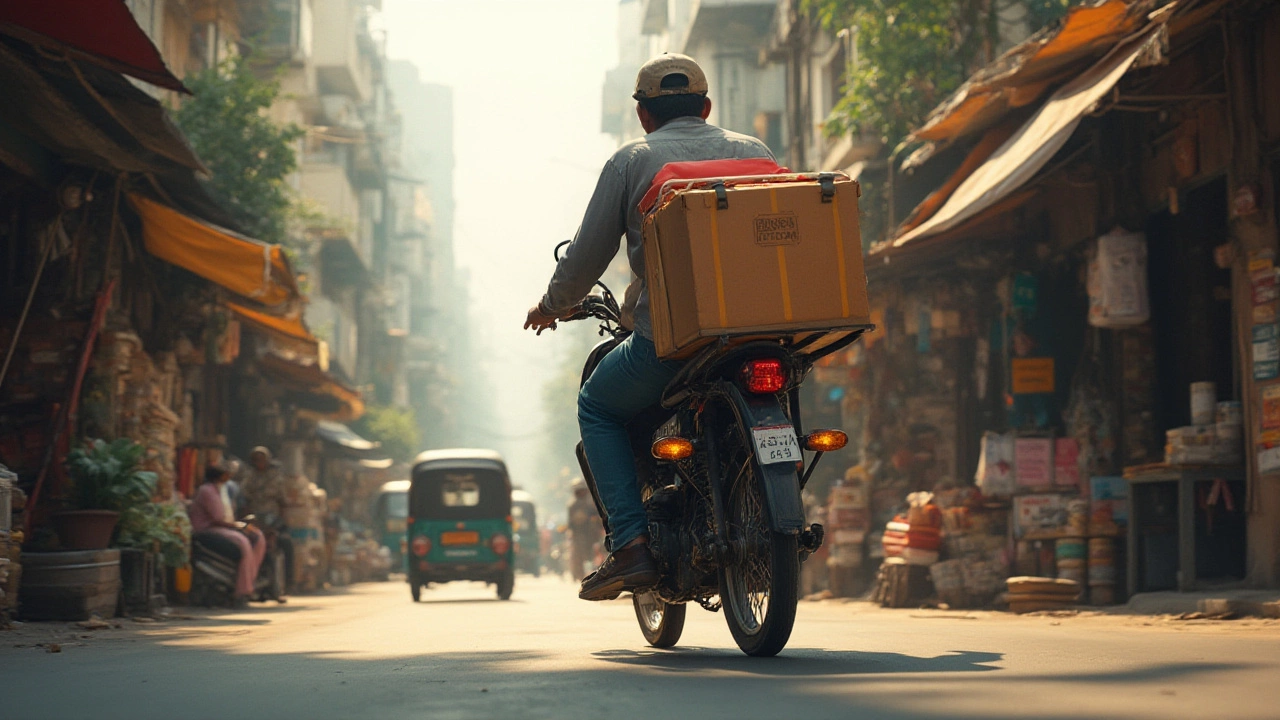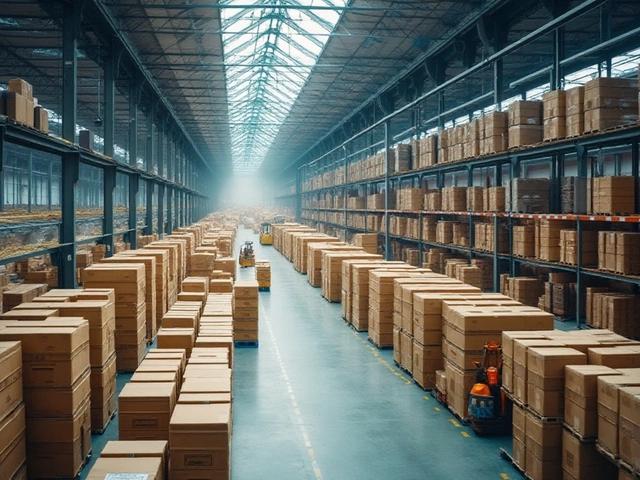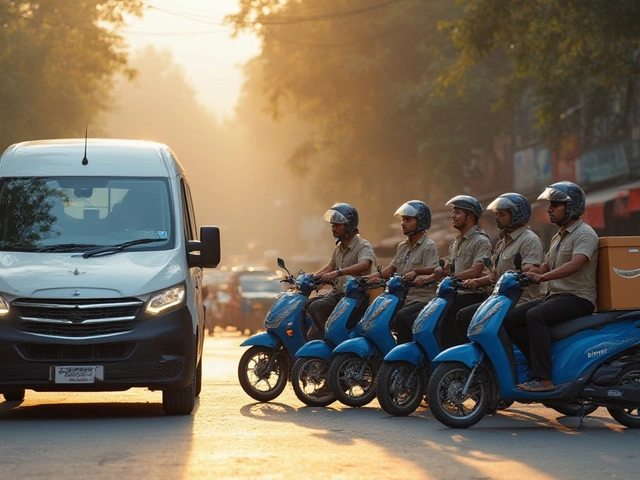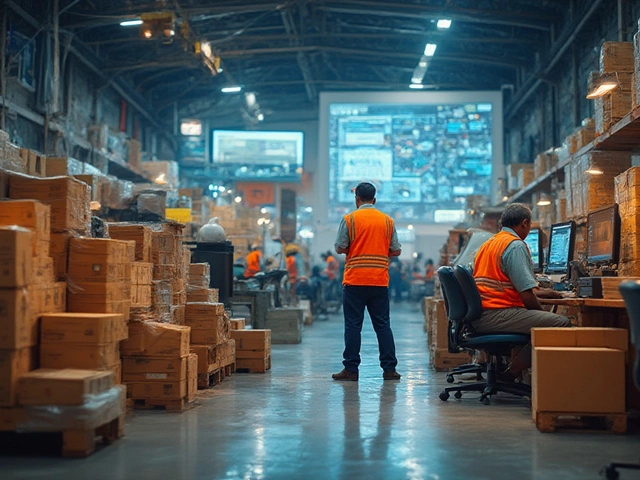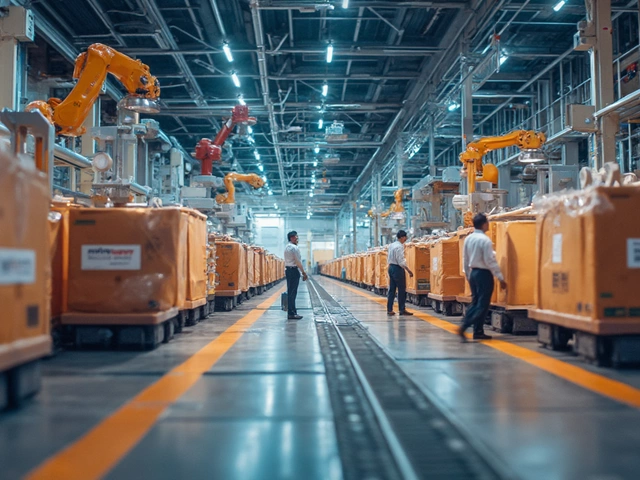You order a phone at midnight, half-awake, with the promise it'll be at your door tomorrow. But by noon, there’s still nothing—only a tracking update saying “Out for Delivery.” Ever wondered what really happens during “the last mile”? If just one part of your package’s journey is going to turn you into a refresh-the-tracking-page addict, it's this one. Last mile delivery is where the promises of two-hour delivery clash with traffic jams, apartment buzzers, and lost drivers. And while it sounds bite-sized, the so-called last mile can make or break your delivery experience.
What Is Last Mile Delivery and Why Is It So Slow?
Let’s rip off the Band-Aid: last mile delivery doesn’t literally mean a single mile. It’s a snappy phrase for the final stretch—when your order leaves the nearest warehouse or sorting hub and makes its complicated way to wherever you are. Sometimes that’s a high-rise in the city, other times it’s a remote cottage with no street signs. Here’s the thing: this last leg is famously inefficient. Not just by a little. According to Capgemini’s “Last Mile Delivery Challenge” report, the last mile soaks up over half (53%) of the total shipping cost your retailer pays. Surprised? You should be, because all those fancy robots and drones you hear about rarely help with this final bit—most packages are still hand-delivered by drivers in vans navigating the same city mess the rest of us do.
Why does it drag so much? Start with traffic. Every city has its own flavor of gridlock—from New York’s double-parkers to LA’s car-choked freeways. Then you’ve got the problem of missed deliveries: drivers knocking at empty homes, calling phones that go unanswered, or dealing with buzzers that don't budge. Add on delivery windows (that tiny slice of the day someone will actually receive a package), weather delays, and old-school paper tracking in some regions. Toss in rising parcel volumes—thanks to eBay, Amazon, TikTok Shop, and a million small sellers—and there’s little wonder why the final mile feels like a marathon stuck in quicksand.
The average last mile delivery time in the US for standard packages is around 1 to 2 days, but nobody “feels” the average. Some city deliveries complete in two hours, while rural shipments might need a couple of days. A 2023 study by McKinsey found that 87% of US consumers expect last mile delivery to be completed within two days; but only 55% of deliveries actually manage that window in places where infrastructure lacks investment. In certain peak periods—think Black Friday or Christmas crunch—gaps between expected and actual delivery can stretch by another day or two.
Tip if you want things fast: Pick “same-day” or “next-day” options where possible, but always read the fine print. Some retailers claim same-day delivery but only dispatch after a cut-off hour, so an 11am order might not reach you till the following afternoon. Also, urban areas almost always fare better—dense drop-offs are easier to optimize.
What Really Impacts Last Mile Delivery Time?
Let’s separate the hype from the hard facts. Tech companies love to brag about AI and electric vans reducing delivery times, but on the street, the challenges are old-fashioned and stubborn. Here’s the real stuff slowing your package:
- Traffic patterns: Not just overall city congestion, but weird local quirks. A delivery van can't squeeze down a one-way alley packed with construction, even if GPS says otherwise.
- Recipient availability: If you’re not home and the buzzer doesn’t work, the driver usually tries again later. That’s a guaranteed extra delay.
- Building access: Big apartments, gated communities, and office parks without clear signage equal wasted minutes hunting for the right door.
- Parcel volume and batching: On mega-shopping days, drivers have to carry ever-heavier loads—but each drop-off still takes its own sweet time.
- Weather and local events: Snow, floods, marathons, or even a local block party might close streets and reroute vans miles out of their way.
Want to make things smoother for your own deliveries? Drop a note for your driver—clear delivery instructions in that little box at checkout can shave off hassle. Something like “Blue house, second porch, dog’s friendly but barks” works so much better than nothing. You can also choose alternate pick-up points in areas served by Amazon Hub, UPS Access Points, or local lockers, which helps when you're not home.
Insider fact: Companies like UPS and FedEx invest millions in route-optimization software. UPS famously trained its drivers to avoid left turns (to save on fuel and idle time). According to their data, cutting down left turns shaved miles off each route, saving an estimated 10 million gallons of gas a year. But even with algorithms and smart routing, shaky cell coverage or faulty scanners can throw wrenches into the “real-time” updates you see as a consumer.
Peak demand is another silent saboteur. Good luck getting speedy delivery the Monday after Thanksgiving—drivers are swamped, sorting hubs overflow, and the “out for delivery” status might mean your box is one among hundreds on a single van. During COVID lockdowns, last mile times doubled in several cities because the volume of online orders exploded while couriers struggled with staffing shortages.
If you want to know the truth about last mile delivery, “expect delays, but be pleasantly surprised when things go fast,” says Brandon Fried, Executive Director at the Airforwarders Association.
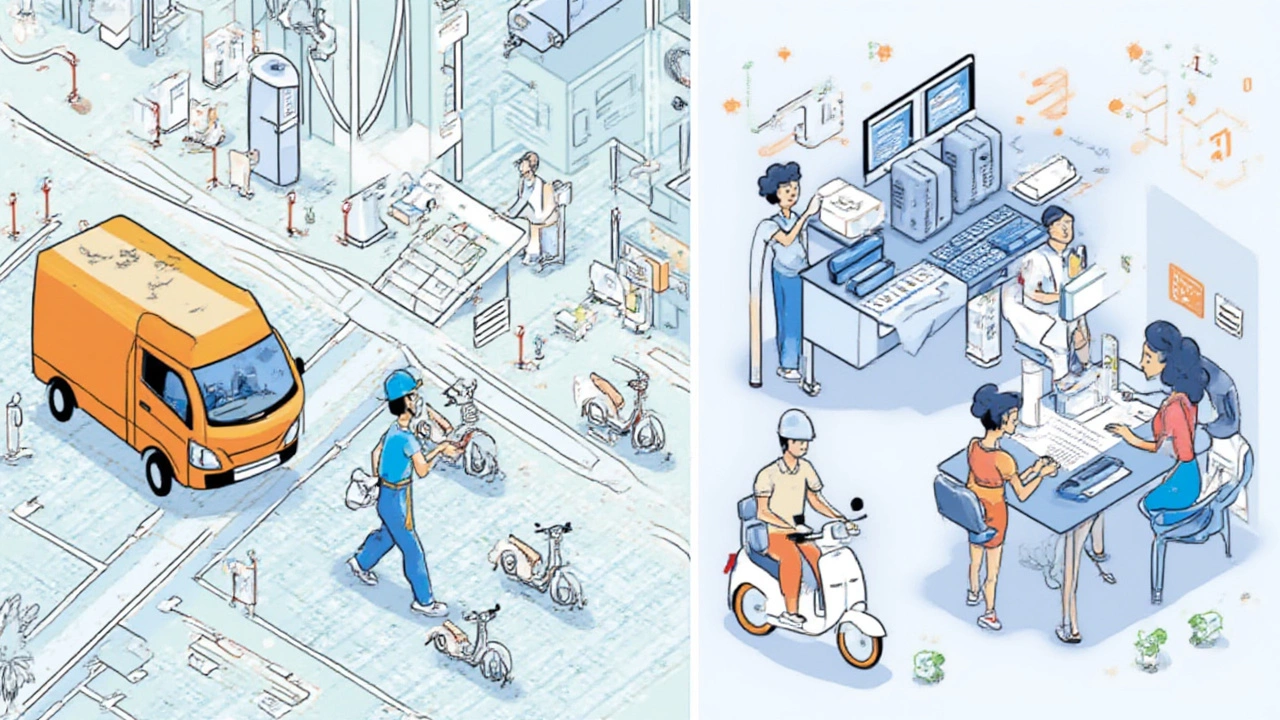
How Companies Are Speeding Up the Last Mile (or Trying To)
The industry loves a good innovation story. Drones, self-driving robots, sidewalk droids—they all make headlines. But look closer and most of your stuff is still brought by someone in a high-vis vest, wrestling with staircases and sorting bins. That said, some business strategies really do help cut delivery times. One is micro-fulfillment: companies set up small local “dark stores” and urban warehouses, basically mini distribution centers, surprisingly close to where you live. This lets them dispatch packages much faster than if they all came from a big warehouse miles outside the city.
Another is crowdsourced delivery. Ever get a local courier who turned out to be a guy in his own car, not a branded van? That’s because companies like Postmates, DoorDash, and Uber Eats (yep, they deliver more than just food now) use everyday people to move stuff quickly when traditional networks are stretched thin. For urgent, same-day deliveries, restaurants, retailers, and boutiques love this model. And it pays off: last year, Deloitte reported that crowdsourced couriers reliably cut down delivery times in urban markets almost 30% over traditional networks.
Lockers and pickup points also speed things up and dodge one of the biggest pitfalls—missed deliveries. No waiting around for a knock, no "sorry we missed you" slip. Amazon, FedEx, and UPS keep installing new smart lockers outside supermarkets, gas stations, and apartment complexes. Customers pick up at their convenience, couriers drop off dozens of packages at once, and the clock-ticking inefficiency of door-by-door drop-offs eases up.
Some companies try tech-powered cleverness: AI software predicts the best route for each van down to the block, using real-time traffic and weather data. Amazon even patents “anticipatory shipping”—they start sending items toward regions where they predict demand, before you click Buy. Still, none of these tools guarantee miracles. Most experts will tell you that the so-called “Amazon effect” (constant pressure for shorter and shorter delivery times) is pushing the industry forward, but real progress isn’t instant. It takes investments in infrastructure, people, and sometimes, just plain luck on the day.
Ever wonder what slows things down in the “last 100 feet,” when the driver is actually in your building? Multiple studies show major holdups aren’t on the road—they’re in hallways, elevators, and at security desks. That’s why businesses are rolling out tech like secure drop-off rooms in apartments, barcode-entry elevators for couriers, and even robot porters in high-end complexes. All these little tweaks chip off seconds and minutes from every individual delivery. Stack that up across thousands of drops a day and the impact is serious.
Tips for Getting Faster Deliveries and What the Future Holds
If you’re as impatient about online shopping as I am, you’ll want the hacks. Here goes:
- Use accurate, simple delivery instructions. Mention visual clues (“red mailbox,” “second floor, left door”).
- Choose pick-up lockers if you know you might not be home.
- Select premium delivery services if you desperately need something—“express” or “guaranteed” usually means better handling.
- Avoid peak periods (major sales, holidays) when possible; times like Tuesday or Wednesday mornings often see lower volumes.
- Track your order in the company’s app—it’s usually better than third-party tracking sites for up-to-date info.
Now, about what’s next for the last mile. Industry insiders are betting on local fulfillment taking the stage, with stores acting as mini-warehouses for faster dispatch. Companies keep piloting autonomous options (drones, delivery bots), but zoning laws and good old-fashioned neighborhood skepticism are big hurdles. The push for sustainable delivery is real—expect to see e-bikes and electric vans rolling out more, since cities are getting fed up with noisy, polluting delivery traffic. There's also a lot more data-driven micro-managing: tracking deliveries by the minute, predicting package theft hotspots, even mapping out the calmest times for each street.
However, don’t toss your expectations for instant everything just yet. Remember, the last mile will probably always be unpredictable—each building, street, and customer throws a wrench in the plan. But companies are definitely pouring money in to make things faster, cleaner, and just a bit smarter on each run. So, next time you see a courier sweating through a maze of doorways, you’ll know: there’s an army of algorithms, logistics coordinators, and infrastructure investments behind that “Arriving Today” status. And if your package actually shows up early? Celebrate—you’ve just witnessed a true modern miracle of logistics.
